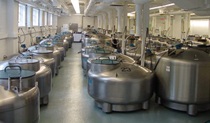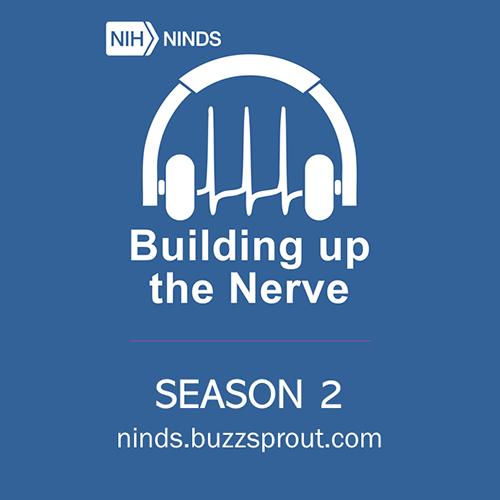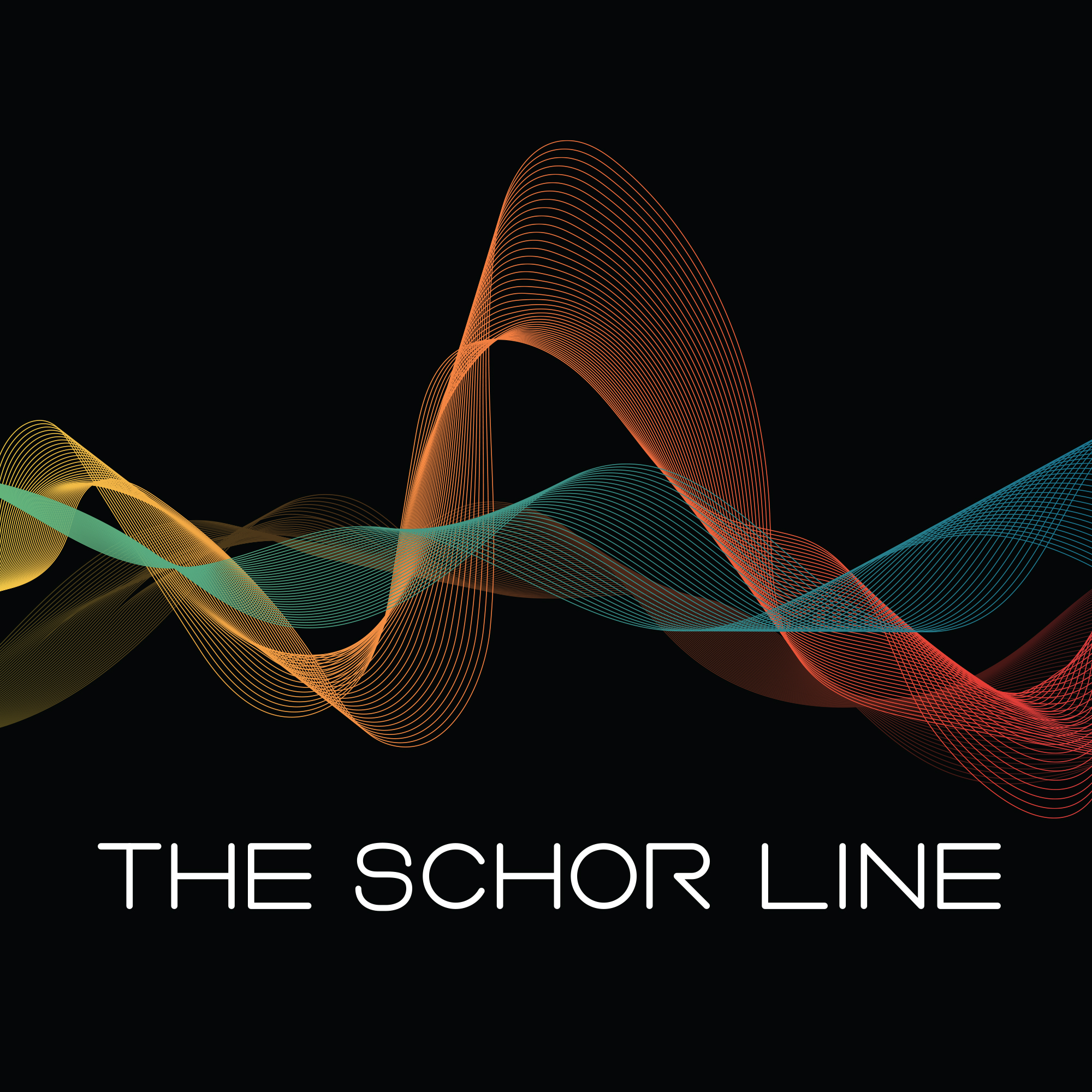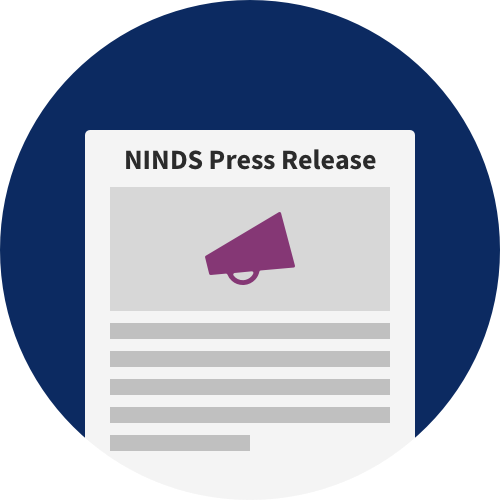COVID-19 is an emerging, rapidly evolving situation.
Get the latest public health information from CDC: https://www.coronavirus.gov
Get the latest research information from NIH: https://www.nih.gov/coronavirus
NIH staff guidance on coronavirus (NIH Only)
You are here
Cell/Tissue/DNA
Cell/Tissue/DNA
Various neuroscience reagents and resources can be obtained by researchers, including human DNA, brain bank tissue and stem cell lines.
NeuroBioBank
The NeuroBioBank, supported by the NIMH, NINDS, and NICHD was established in September 2013 as a national resource for investigators utilizing human post-mortem brain tissue and related biospecimens for their research to understand conditions of the nervous system. With specimens that span neurological, neuropsychiatric, and neurodevelopmental diseases and disorders, the NeuroBioBank serves as a central point of access to the world-class collections of our five network sites. In addition, the NeuroBioBank provides researchers with a wealth of resources to facilitate their research, including medical records and clinical data sets (when available) as well as access to quality metrics and SOPs used by each site.
The contracts for the NeuroBioBank Tissue Repositories (NBTRs) were awarded to the following sites:
- Brain Endowment Bank University of Miami (PI: William Scott)
- Brain and Tissue Bank University of Maryland (PI: Thomas Blanchard)
- Brain Tissue Donation Program University of Pittsburgh (PI: David Lewis)
- Harvard Brain and Tissue Resource (PI: Sabina Berretta)
- Mt. Sinai Brain Bank (PI: Harry Haroutunian)
- Sepulveda Research Corporation (PI: Rashed Nagra)
Contact:
Daniel Miller, Ph.D.
Program Director, NINDS
daniel.miller.nih.gov
Parkinson’s Disease Biomarkers Program (PDBP)
 The NINDS-supported Parkinson’s Disease Biomarkers Program, or PDBP, provides longitudinal human biospecimens and associated data collected from Parkinson's and control subjects for use in Parkinson's Disease Biomarkers discovery projects. Biospecimen types available include: plasma, serum, DNA, PAX-gene tube (RNA), and Cerebrospinal fluid (CSF). A core of standardized de-identified HIPAA-compliant longitudinal clinical data, based on clinical data elements is available for each unique individual as well. These are harmonized and based upon the NINDS Common Data Elements (CDEs).
The NINDS-supported Parkinson’s Disease Biomarkers Program, or PDBP, provides longitudinal human biospecimens and associated data collected from Parkinson's and control subjects for use in Parkinson's Disease Biomarkers discovery projects. Biospecimen types available include: plasma, serum, DNA, PAX-gene tube (RNA), and Cerebrospinal fluid (CSF). A core of standardized de-identified HIPAA-compliant longitudinal clinical data, based on clinical data elements is available for each unique individual as well. These are harmonized and based upon the NINDS Common Data Elements (CDEs).
Researchers can view available data via the Data Management Resource (DMR). Investigators have the ability to query (and download) clinical data using the “Query” tool, request biospecimens from the “NINDS Biorepository Catalog” and order biospecimens via the “Order Manager” tool. Investigators gain access to the DMR by requesting an account (Request a PDBP DMR account). Once a signed Data Use Certification (DUC) is received, a requesting investigator will be granted access to the Query tool, NINDS Biorepository catalog and Order Manager. To obtain access to biospecimens, investigators are asked to provide a summary of their proposed biomarker research project and a power analysis to justify the number and types of biospecimens requested. The PDBP Biospecimen Resource Access Committee (BRAC) reviews the requests and the NINDS Biorepository Staff work with investigators whose requests are approved to assure receipt of the biospecimens. The specimens arrive masked, and will only be unmasked once resultant data are submitted to the PDBP Data Management Resource (DMR).
Contact:
Debra Babcock, MD
Program Director, NINDS
dbabcock@ninds.nih.gov
Christine Swanson-Fischer, Ph.D.
Program Officer, NINDS
christine.swanson-fischer@nih.gov
AIDS Tissue Resource
 The National NeuroAIDS Tissue Consortium (NNTC) collects, stores, and distributes samples of nervous tissue, cerebrospinal fluid, blood, and other tissue from HIV-infected individuals. The NNTC has been supported by NIMH and NINDS since 1998 and operates through a National Coordinating Office and four regional centers: the Texas NeuroAIDS Research Center; the California NeuroAIDS Tissue Network; the National Neurological AIDS Bank; and the Manhattan HIV Brain Bank. The mission of the NNTC is to provide high quality and well-characterized tissue samples from patients who died with HIV, including neuromedical and neuropsychiatric data gathered antemortem, to scientists studying the effects of HIV on the human brain. Since NNTC inception 2,158 participants have been enlisted for clinical evaluation and tissue donation. As of February 14, 2008, 723 central nervous system specimens from both HIV-infected and control subjects have been collected with an additional 1,450 blood samples available, 710 participates have at least three serial samples and 917 CSF samples available obtained from the NNTC patient cohort. NNTC encourages researchers to request tissues and/or clinical data for ancillary studies.
The National NeuroAIDS Tissue Consortium (NNTC) collects, stores, and distributes samples of nervous tissue, cerebrospinal fluid, blood, and other tissue from HIV-infected individuals. The NNTC has been supported by NIMH and NINDS since 1998 and operates through a National Coordinating Office and four regional centers: the Texas NeuroAIDS Research Center; the California NeuroAIDS Tissue Network; the National Neurological AIDS Bank; and the Manhattan HIV Brain Bank. The mission of the NNTC is to provide high quality and well-characterized tissue samples from patients who died with HIV, including neuromedical and neuropsychiatric data gathered antemortem, to scientists studying the effects of HIV on the human brain. Since NNTC inception 2,158 participants have been enlisted for clinical evaluation and tissue donation. As of February 14, 2008, 723 central nervous system specimens from both HIV-infected and control subjects have been collected with an additional 1,450 blood samples available, 710 participates have at least three serial samples and 917 CSF samples available obtained from the NNTC patient cohort. NNTC encourages researchers to request tissues and/or clinical data for ancillary studies.
Related Sites:
National NeuroAIDS Tissue Consortium
NIH Neuroscience Blueprint
Contact:
May Wong, Ph.D.
Program Director, NINDS
wongm@mail.nih.gov
NINDS Human Genetics Resource Center
 The aim of the NINDS Human Genetics Resource Center is to store and distribute genetic samples, lymphoblastoid cell lines, and clinical data to aid in the discovery of genes involved in neurological disorders. The Repository is a NINDS-funded contract to the Coriell Institute for Medical Research that banks and distributes lympoblastoid cell lines and DNA for neurological disease. The available high quality DNA is accompanied by disease-specific clinical data. The NINDS Repository aims to bank a large number of samples to generate the statistical power necessary to detect the moderate effects of a single susceptibility gene in complex genetic disorders. Currently the repository has samples with the following diagnoses:,cerebrovascular disease and stroke (~10,400 available), Dystonia (~1,880 available), epilepsy (~6,000 available), motor neuron disease (~2500 available), Parkinson's disease (~5,600 available), and Tourette syndrome (~ 4,100 available). The Repository also banks and distributes neurologically normal control samples (~ 6,100 available) as well as family-based control samples (~ 4,800 available). Finally, samples with known Mendelian mutations are also available. To date, more than 6,000 NINDS Repository samples have SNP genotype, sequencing, and phenotype data publically available in dbGaP. We encourage both academic and industry-sponsored investigators to deposit or withdraw samples from the NINDS Repository.
The aim of the NINDS Human Genetics Resource Center is to store and distribute genetic samples, lymphoblastoid cell lines, and clinical data to aid in the discovery of genes involved in neurological disorders. The Repository is a NINDS-funded contract to the Coriell Institute for Medical Research that banks and distributes lympoblastoid cell lines and DNA for neurological disease. The available high quality DNA is accompanied by disease-specific clinical data. The NINDS Repository aims to bank a large number of samples to generate the statistical power necessary to detect the moderate effects of a single susceptibility gene in complex genetic disorders. Currently the repository has samples with the following diagnoses:,cerebrovascular disease and stroke (~10,400 available), Dystonia (~1,880 available), epilepsy (~6,000 available), motor neuron disease (~2500 available), Parkinson's disease (~5,600 available), and Tourette syndrome (~ 4,100 available). The Repository also banks and distributes neurologically normal control samples (~ 6,100 available) as well as family-based control samples (~ 4,800 available). Finally, samples with known Mendelian mutations are also available. To date, more than 6,000 NINDS Repository samples have SNP genotype, sequencing, and phenotype data publically available in dbGaP. We encourage both academic and industry-sponsored investigators to deposit or withdraw samples from the NINDS Repository.
Related Sites:
NINDS Human Genetics Resource Center
Contact:
Ran Zhang, Ph.D.
Scientific Project Manager, NINDS
zhangr2@ninds.nih.gov
NINDS Human Biosample Repository (BioSEND)
The NINDS Human Biosample Repository (BioSEND) is located at Indiana University under the direction of Dr. Tatiana Foroud. BioSEND houses biosample collections from a number of natural history studies and clinical trials in Frontotemporal Dementia, Huntington's Disease, Parkinson's Disease, Lewy Body Dementia, and Parkinsonisms, Spinal Cerebellar Ataxia, and Myalgic Encphealomyelitis/Chronic Fatigue Syndrome. Biosamples available through these cohorts include DNA, RNA, plasma, serum, whole blood and cerebral spinal fluid (CSF). Further information about cohort studies, biosamples available, review of biosample access and how to apply for biosample access please visit the following websites:
- Cohort studies supported under the NINDS Biosample Repository (BioSEND)
- NINDS supported Biospecimen Access Committees (BRACs)
- How to apply for biosample access
- Webform application for NINDS Biosample access
Contact:
Christine Swanson-Fischer, Ph.D.
Program Officer, NINDS
christine.swanson-fischer@nih.gov
NINDS Human Cell and Data Repository (NHCDR)
The NINDS Human Cell and Data Repository (NHCDR) is located at Rutgers University under the direction of Dr. Jay Tischfield. The NHCDR provides access to fibroblast and/or induced pluripotent stem cell (iPSC) lines for Amyotrophic lateral sclerosis (ALS), Dystonia, Frontotemporal Degeneration (FTD), Huntington's disease (HD), Parkinson's Disease (PD), Spinal-Bulbar Muscular Atrophy (SBMA), and healthy controls. NHCDR also supports access to unique iPSC collections from NeuroLINCS and Target ALS. A GMP-grade iPSC line and corresponding research grade iPSC line are also available through the NHCDR. Futher information about the human cell lines available and how to order cell lines can be found at the NHCDR website.
Contact:
Christine Swanson-Fischer, Ph.D.
Program Officer, NINDS
christine.swanson-fischer@nih.gov










